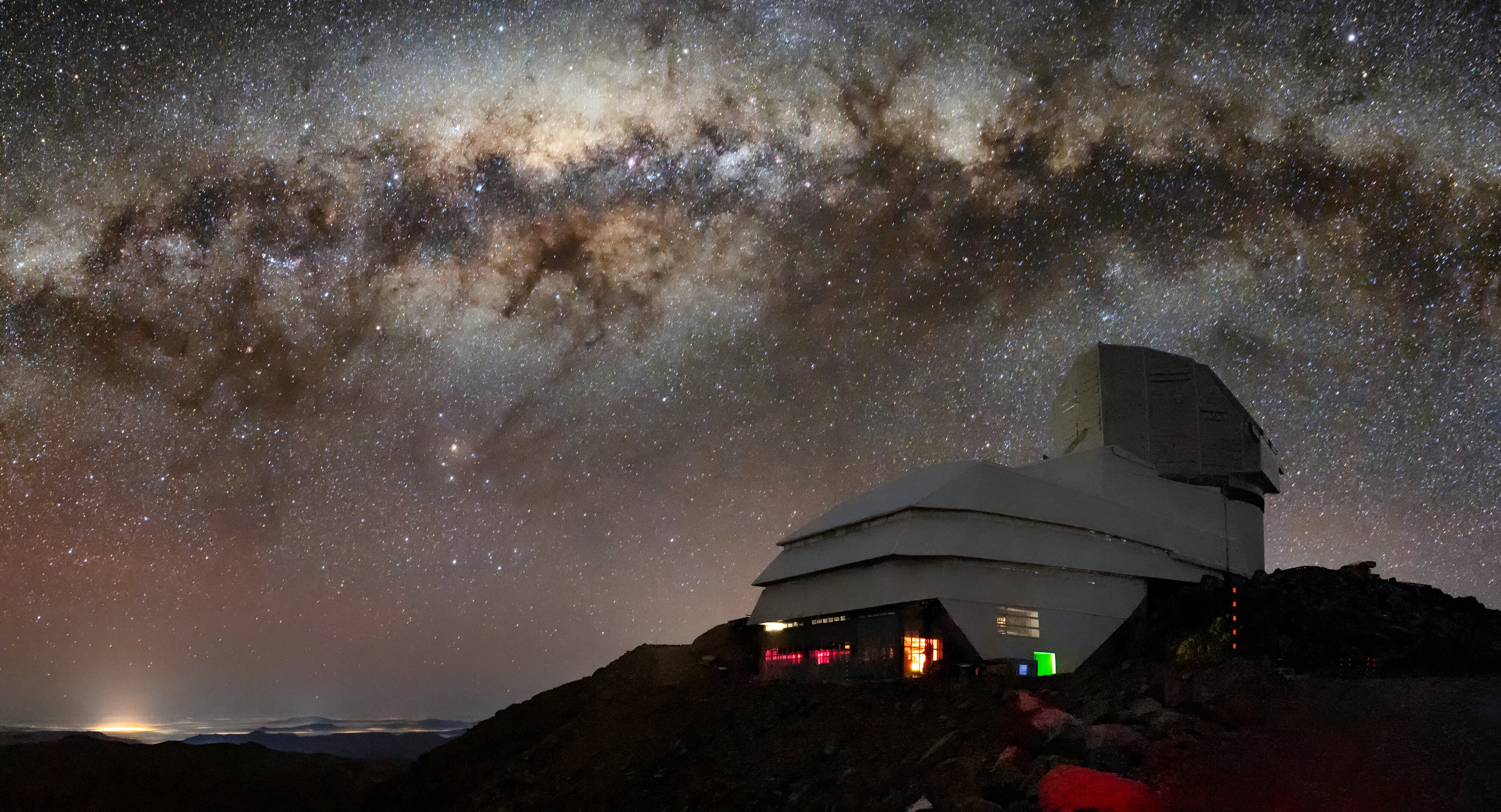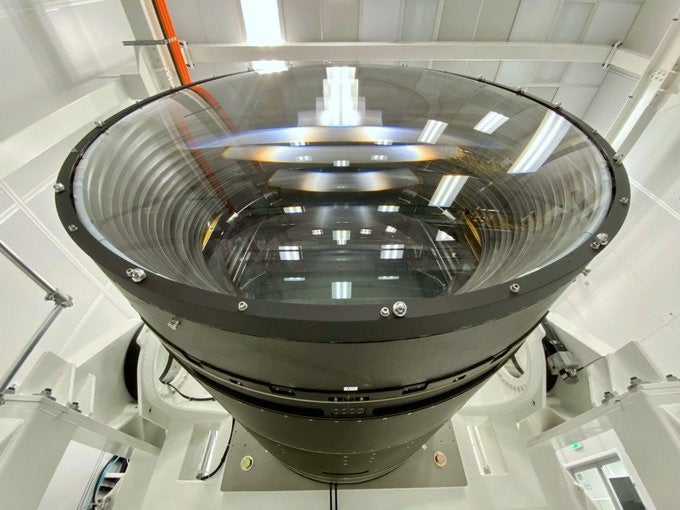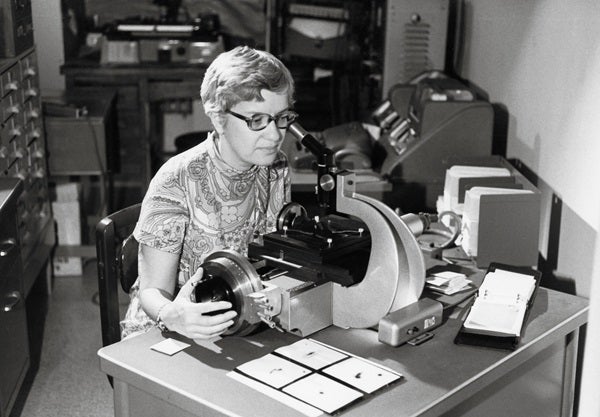
Sitting high on the dry Chilean Andes, the Vera C. Rubin Observatory is set to see its first light in 2025. However, the observatory is already showing its potential in detecting potentially hazardous asteroids. These objects are asteroids that aren’t currently a threat to our planet, but whose orbits bring them close enough that astronomers want to monitor them.
In test of a new algorithm called HelioLinc3D, developed by researchers at the University of Washington for the observatory’s upcoming 10-year survey, a 600-foot (183 meters) near-Earth asteroid (NEA) dubbed 2022 SF289 was identified in data from the ATLAS survey in Hawai’i. The object does not threaten life on Earth, but finding it with HelioLinc3D based on just a few images confirms that the tool can discover new objects using fewer and less frequent observations than current tools.
“Current operating asteroid surveys, including ATLAS, aim to get enough data in one night to discover an asteroid based on that single night’s data,” says Ari Heinze, a research scientist at the University of Washington and principal developer of HelioLinc3D. “And that typically requires four images.” But Rubin, Heinze says, plans to image each field only twice “to cover more areas of the sky and discover more things. … That means that if there were an unknown asteroid there, you would have only two images of it on that night.” So, the new software is designed to perform something called multi-night linking, combining data from multiple nights to find real objects with the fewer observations available.
Vera C. Rubin Observatory will ‘double’ amount of known asteroids
Our solar system hosts tens of millions of rocky objects, from small asteroids under a few feet long to dwarf planets nearly the size of our Moon. Each one originated from when the planets formed more than 4 billion years ago. Most are far from Earth, but some stalk within some 5 million miles (7 million kilometers) of Earth’s orbit. Scientists want to monitor these types of asteroids, called potentially hazardous asteroids (PHAs), to ensure they won’t collide with Earth.
“It took us 200 years to discover all the asteroids we know to date, about 1.2 million asteroids. In the first three to six months of Rubin, we will double that,” says Mario Jurić, the Rubin Observatory’s solar system discovery team lead and the director of the University of Washington’s DiRAC Institute. “We will also double the number of known potentially hazardous objects. These objects can potentially collide with the Earth, so hopefully, we don’t find any, of course, but if it does, I hope we find them as soon as we can so we have the time to do something about it.”

The world’s largest fish-eye lens
The Vera C. Rubin Observatory will begin searching the skies for asteroids and other moving, changing objects in 2025. Every three days, its 8.4-meter Simonyi Survey Telescope will take digital images of the sky using a 3,200-megapixel camera and the world’s largest fish-eye lens — about the size of a car,
Collecting all those images means researchers will be left with 20 terabytes of data per night to process. To sift through it all quickly and accurately for signs of PHAs, Heinz and collaborators created Heliolinc3D. Other telescope systems like NASA’s ATLAS survey, run by the University of Hawai’i, search for PHAs by taking several photos of each region of the sky at least four times. Researchers identify asteroids as streaks of light, which are the objects moving quickly compared to the stationary background stars. About 2,350 PHAs have been counted using this method, but many more await discovery.
‘I cannot wave my hands in excitement enough’
To see how the software will work once the much-anticipated observatory is online, Heinze and his team gave data collected by ATLAS to the Heliolinc3D algorith. On July 18, it spotted PHA: 2022 SF289, which ATLAS had imaged on Sept. 19, 2022, when the asteroid was 13 million miles (21 million km) from Earth. While ATLAS did pick up the asteroid three times each on four different nights, that’s not enough for current tools to identify a new object (that requires four observations in a single night). But Heliolinc3D linked together the detections across all four nights to spot the asteroid.
Heliolinc3D works by looking for the changes in the sky, essentially spotting the differences between two successive images. “That’s the kind of game that we play. We subtract the two images and then what’s left are differences. We identify those differences, and then the computer measures what they are like, how bright they are, where they are in the sky,” says Jurić. At its closest approach, 2022 SF289 swings within 140,000 miles (225,300 km) of Earth’s orbit. Fortunately projections show that it poses no danger of colliding with Earth.
“I cannot wave my hands in excitement enough. I’m super excited for it because on day one of the survey, the pipeline will be ready because the algorithm that’s powering it has been developed and tested on real data,” says Meg Schwamb, a planetary scientist at Queen’s University Belfast and co-chair of the LSST Solar System Science Collaboration. “They’re on the way to being ready to go. That is the algorithm that will find 5 million plus discoveries,” she says.

Spotting smaller asteroids
Aside from PHAs, scientists expect Rubin to make many more solar system discoveries, including identifying Kuiper belt objects potentially larger than Pluto located in the outer solar system, as well as new interstellar objects. So far, we’ve only found two such interstellar visitors: ‘There are only two known objects, I/2017 U1 ‘Oumuamua and 2I/Borisov. Jurić says that interstellar objects will be found at a rate between one per year and one per month.
Rubin is also expected to observe the unexpected. “It’s going to find the weird, the wonderful, and the strange. Because with 5 million objects, you’re going to find weirdos, those unknown unknowns, right? The things that we didn’t know about,” says Schwamb.
“The beauty of [Rubin] is that this dataset will be available to the [whole astronomical] community,” Juric says. “Anyone working on astronomy in the U.S., anyone in Chile, several international partners, and then, after two years, the entire world. So it really will democratize access to the sky.”









